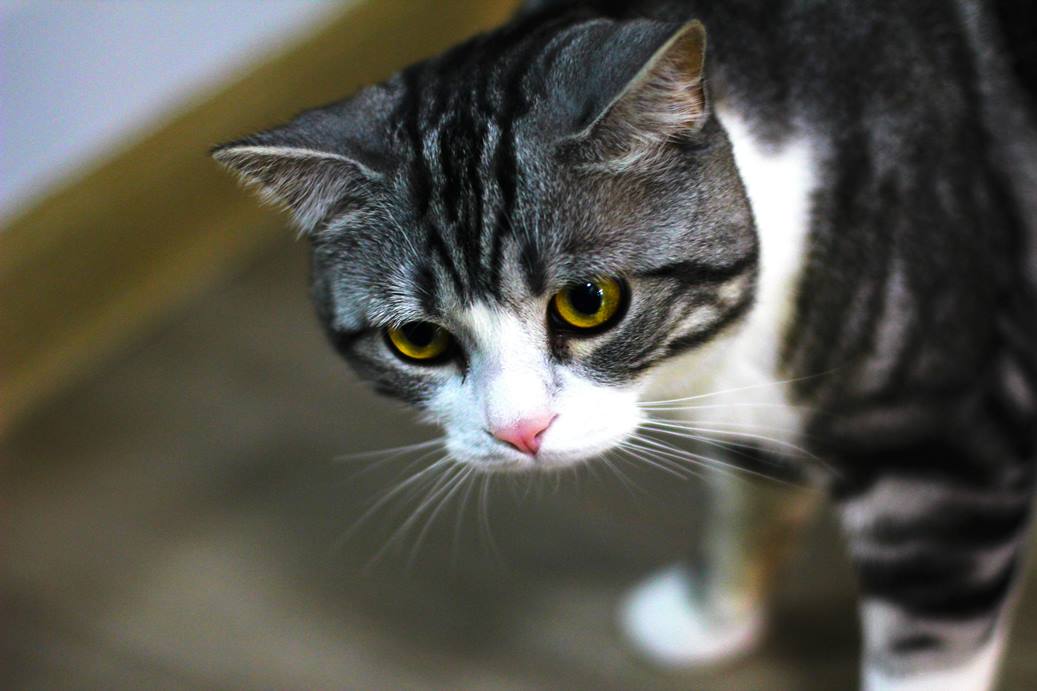In this Article
Bringing a kitten into a household with other pets-be they dogs, cats, or even smaller critters-can be an exciting yet daunting experience. Kittens are naturally curious and adaptable, but their early interactions with other animals can shape their behavior for years to come. Proper socialization is key to fostering a peaceful multi-pet home and reducing stress for both pets and owners. In this guide, we'll dive into expert-backed tips, fascinating insights into cat behavior, and practical steps to ensure your kitten's introduction to other pets is a success. Whether you're a first-time pet owner or a seasoned animal lover, this article will give you the tools to create a harmonious environment.
Why kitten socialization matters: The Science Behind
Socialization isn't just a buzzword - it's a critical developmental process. According to the American Veterinary Medical Association (AVMA), the prime socialization window for kittens occurs between 2 and 7 weeks of age, although it can extend to 14 weeks with proper guidance. During this time, kittens are most receptive to new experiences, including meeting other animals. A 2019 study published in Applied Animal Behaviour Science found that kittens exposed to positive interspecies interactions before 12 weeks were 40 percent less likely to show fear-based aggression toward dogs or other cats later in life.
But what if you adopt an older kitten or miss this window? Don't worry - while early socialization is ideal, cats are capable of learning and adapting throughout their lives. The key is patience, preparation, and an understanding of cat behavioral cues.
Step 1: Preparation is Everything
Before your kitten meets her new housemates, set the stage for success. Here's how:
- Create safe spaces: Kittens need a retreat where they feel safe. Set up a separate room with food, water, a litter box and toys. A 2021 survey by the ASPCA found that 68% of multi-pet households reported a smoother introduction when each animal had its own territory to begin with.
- Scent Exchange: Cats rely heavily on smell-studies estimate that they have 200 million olfactory receptors, compared to a dog's 300 million and a human's 5 million. Rub a rag on your kitten and let your other pets sniff it, and vice versa. This will familiarize them with each other's scents before a face-to-face meeting.
- Health Check: Make sure all pets are up to date on vaccinations and parasite control. The last thing you want is a flea outbreak or a sick pet complicating your introduction.
Step 2: Understand Your Pets' Personalities
Each animal is unique, and its temperament will dictate the pace of socialization. A high-energy dog may overwhelm a shy kitten, while a territorial older cat may see the newcomer as a threat. Here's a quick breakdown of some common dynamics:
- Kitten-Dog Introductions: Dogs often view kittens as playmates-or prey, depending on their breed and training. A 2023 report by the American Kennel Club (AKC) found that 75% of successful dog-cat pairings involved dogs with low prey drive, such as retrievers or spaniels, rather than terriers or hounds.
- Kitten-to-cat introductions: Adult cats may take longer to warm up. Research from the University of Lincoln (2020) found that 62% of adult cats were initially hostile to new kittens, but this dropped to 15% after two weeks with proper management.
Watch body language: A kitten with a puffy tail or flattened ears is stressed, while a dog with a wagging tail and relaxed posture is probably friendly. In cats, slow blinking and a raised tail signal comfort.
Step 3: Controlled First Meetings
The first meeting sets the tone, so keep it short and supervised:
- For dogs: Keep your dog on a leash and let her explore at her own pace. Reward calm behavior with treats - studies show that positive reinforcement increases compliance in dogs by 85% (Journal of Veterinary Behavior, 2022). Keep sessions under 10 minutes at first.
- For cats: Use a baby gate or carrier to create a barrier. Let the cats see each other without direct contact. A 2018 study in Feline Medicine and Surgery found that gradual exposure over 7-10 days reduced hissing and swatting by 50%.
Avoid forcing interactions. If tensions arise, separate the animals and try again later. Patience pays off-hurrying can cause setbacks.
Step 4: Build positive associations
Turn encounters into a treat-worthy event. Feed your pets on opposite sides of a closed door or gate, gradually moving the bowls closer over days. A 2022 experiment by Cornell University's College of Veterinary Medicine showed that 78% of cats and dogs associated feeding time with reduced stress during introductions. Toys and play can also help-distract a rambunctious dog with a chew toy while the kitten watches from a perch.
Step 5: Long-term harmony in multi-pet households
Once the initial introductions are successful, focus on coexistence:
- Resource Management: Prevent competition by providing multiple food bowls, water stations, and litter boxes. The Humane Society recommends one litter box per cat plus one extra-so a two-cat home needs three.
- Play and attention: Jealousy can lead to conflict. A 2024 survey by PetMD found that 55% of multi-pet owners noticed fewer fights when they scheduled individual playtime for each pet.
- Monitor behavior: Watch for signs of stress, such as excessive grooming (seen in 30% of anxious cats, according to a 2020 AVMA study) or destructive chewing in dogs. Consult a veterinarian or behaviorist if problems persist.
Expert Tips and Tricks
- Age Matters: Kittens under 6 months of age adapt more quickly than older cats. A 2021 study in the Veterinary Record found that kittens introduced before 12 weeks were 60% more likely to bond with resident pets than those introduced after 6 months.
- Spay/Neuter: Unaltered pets are more territorial. The ASPCA reports that spay/neuter reduces aggression in cats and dogs by up to 70%.
- Pheromone diffusers: Products like Feliway (for cats) or Adaptil (for dogs) mimic calming scents. A 2019 study showed a 45% reduction in stressful behavior when diffusers were used during introductions.
Real Life Success Stories
Take Sarah, a multi-pet owner from Colorado. She introduced her 8-week-old kitten, Momo, to her 3-year-old Labrador, Max. "Max was so excited, he was barking and lunging," she recalls. By using a leash, scent swaps, and treat rewards, Sarah saw progress within a week. "Now they nap together-it's adorable." Similarly, James in Oregon successfully integrated his kitten, Luna, with his 10-year-old tabby, Whiskers. "Whiskers hissed for days," he says, "but the baby gate trick worked wonders. They're best friends now."
Common mistakes to avoid
- Skipping the slow intro: A 2023 Petco survey found that 40% of failed introductions were due to owners rushing the process.
- Ignoring warning signs: Growling, hissing, or hiding should not be dismissed - address them early.
- Unequal attention: Favoring the kitten may cause resentment in the resident pets.
The numbers don't lie
- 82% of multi-pet households report successful integration with proper socialization (Petfinder, 2024).
- 1 in 3 cats exhibit stress-related behaviors without gradual introduction (AVMA, 2021).
- 90% of dogs accept kittens when trained with positive reinforcement (AKC, 2023).
The bottom line: A Lifelong Bond Awaits
Socializing your kitten with other pets isn't just about avoiding chaos-it's about building a happy, multi-species family. With preparation, patience, and a dash of expert know-how, your kitten can grow up alongside her furry siblings in a home filled with purrs, cuddles, and mutual respect. Start slow, stay consistent, and you'll soon see the magic of interspecies friendship unfold.

